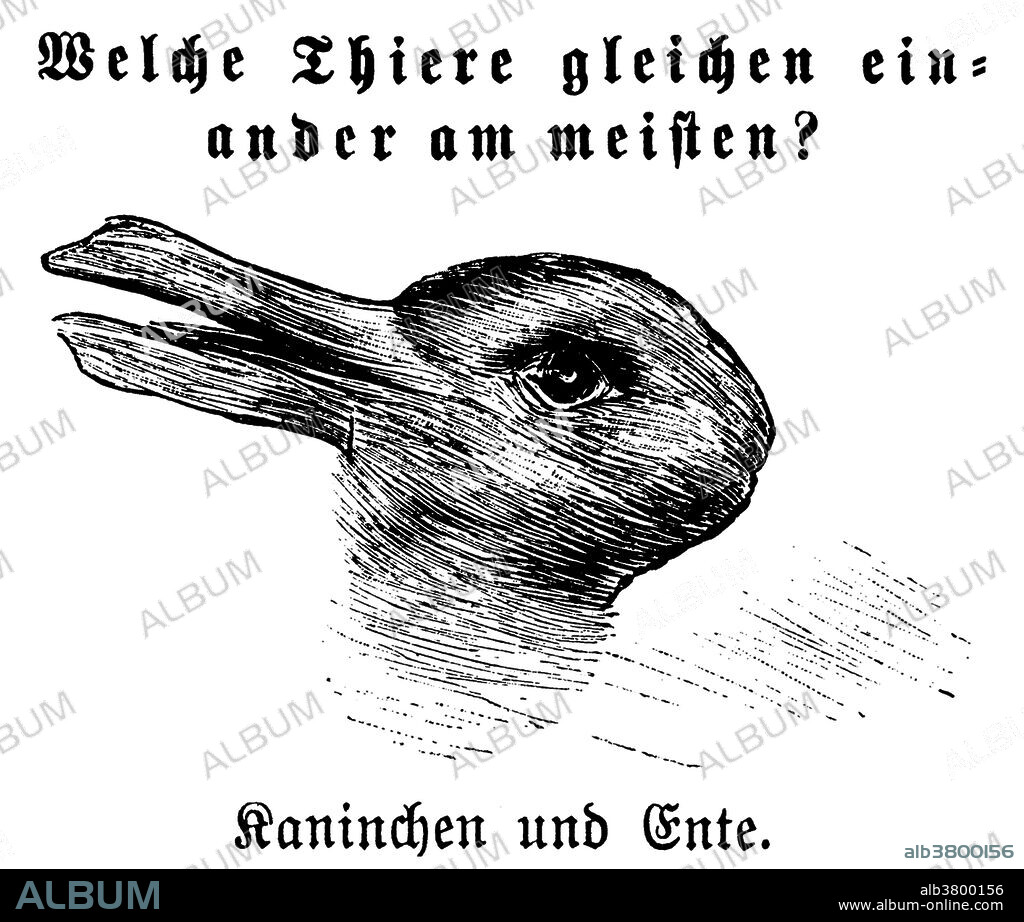alb3800156
Optical Illusion, Rabbit Or Duck? 1892

|
Add to another lightbox |
|
Add to another lightbox |



Buy this image.
Select the use:

Title:
Optical Illusion, Rabbit Or Duck? 1892
Caption:
Entitled: "Welche Thiere gleichen einander am meisten? "(Which animals are most like each other?), with "Kaninchen und Ente" (Rabbit and Duck) written underneath. The rabbit-duck illusion is an ambiguous image in which either a rabbit or a duck can be seen. The earliest known version is from a 1892 issue of Fliegende Blätter, a German magazine. An optical illusion is a phenomena where one seems to see something that doesn't exist or with another perspective. It is also called visual illusion and is categorized by visually apparent images. An optical illusion is basically a visually misleading image interpreted by the brain inaccurately. There are three main types: literal optical illusions that create images that are different from the objects that make them, physiological ones that are the effects on the eyes and brain of excessive stimulation of a specific type (brightness, color, size, position, tilt, movement), and cognitive illusions, the result of unconscious inferences.
Credit:
Album / Science Source / New York Public Library
Releases:
Model: No - Property: No
Rights questions?
Rights questions?
Image size:
4200 x 3564 px | 42.8 MB
Print size:
35.6 x 30.2 cm | 14.0 x 11.9 in (300 dpi)
Keywords:
1892 • 19TH CENTURY • AMBIGUOUS IMAGE • ART • ARTWORK • BW • COGNITIVE ILLUSIONS • DRAWING • FALSE PERSPECTIVE • HISTORIC • HISTORICAL • HISTORY • ILLUSTRATION • ILLUSTRATIONS • MISLEADING IMAGE • OPTIC ILLUSION • OPTICAL ILLUSION • PERCEPTUAL ILLUSION • PERSPECTIVE • PHENOMENA • PHENOMENON • RABBIT DUCK ILLUSION • RABBIT-DUCK ILLUSION • SCIENCE • VISUAL ILLUSION • WHITE BACKGROUND
 Pinterest
Pinterest Twitter
Twitter Facebook
Facebook Copy link
Copy link Email
Email
